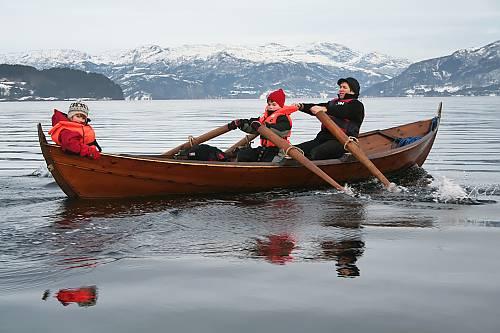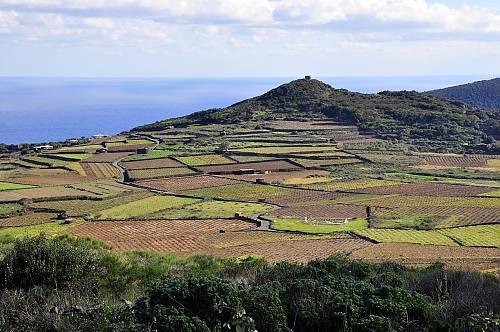I didn’t go to Nazare for the palaces or the churches, the azulejos (glazed colored pottery tiles) or even to listen to fados, those sad, hypnotic musical tales of unrequited love popular in Lisbon and Coimbra. I went because there is no other fishing village quite like Nazare.
Situated on the Costa da Prata, or the Silver Coast, about 162 km. north of Lisbon, Nazare is known for its superb beaches and great surfing. But when we rented a car through Avis in Estoril, it was November and not quite beach weather. The drive, through Sintra, Mafra and Obidos was especially worthwhile, winding through vestiges of feudal Portugal, tall scented forests, and windmill-dotted bluffs.
My partner and I found that November was a great time to visit because most of the tourists had gone home, whereas we were told that in June, July, August and half-way through September the little fishing village is swarming with visitors, many of them from England. Big wave surfing is the major draw.
Nazare is named for a statue of the Virgin, reputedly brought back from Nazareth in the Holy Land by a Greek monk in the fourth century. Our Lady of Nazare, the little black statue shrouded in legend and mystery, is paraded through the streets of the village by local fishermen in the second week of September, during what is called the Romaria da Nossa Senhora da Nazare. We were told that the statue was originally taken to Merida in Spain, and then Rodrigo, (the last Visigoth king of the Iberian Peninsula) brought it to Nazare sometime in the 11th century.
The little statue may be seen if you visit the hilltop village of Sitio, overlooking Nazare. The best way to get there is on the Elevador, an elevator that takes sightseers up the hill. The statue is in Sitio’s Church of Our Lady of Nazare or the Santuariao de Nossa Senhora da Nazare. This chuch has been a place of pilgrimage for hundreds of years and is a great place to admire Portuguese tiles. An added plus: the view over the bay is spectacular because this village perches on the edge of a cliff said to be the highest on the coast of Portugal.
Nazare guards its old traditions. When we arrived in the afternoon on a brisk November afternoon the entire waterfront was buzzing with people. Strung along the beach were those unique crescent-hulled boats that hark back to Phoenician times. Painted in bright, primary colours, the strong, stout-bellied boats go out to sea to supply the fish market with everything from sardines to crayfish.
Auctions of the day’s catch are fun to attend. We asked where to find the fish auction and were told if we just strolled a little further along the Avenida da Republica in the late afternoon or early evening, we would hear the drone of the auctioneer’s voice. Visitors are welcome to watch the lively proceedings at the Mercado de Peixe from the upstairs gallery.
We were told that the Our Lady of Nazare on September 8, although we missed it, is a lively festival when villagers pay tribute to their patron saint not only with religious ceremonies, but also with singing, feasting, and dancing, and often with bullfights and funfairs.
It is a festive time and people wear costumes, some women wearing as many as seven flounced, lace-trimmed petticoats under their brightly colored kilts, many of them tartan. Older women still go barefoot from time to time and men dress entirely in black except when it’s festival time. That is when they don their bright tartans, worn as shirts and trousers with long, tasselled wool stocking caps in which they carry their money and other trifles. The women wear a type of knitted wool bolero jacket over a blouse and a headscarf or black felt hat to complete their outfits for festivals.
We walked around and finally found the fishermen’s quarter, with its small, whitewashed cottages lining both sides of steep, narrow alleys leading to the quayside. The area lies between the Praca Manuel de Arriaga and the Avenida Viera Guimares.
Seemingly oblivious to us, the fishermen sat cross-legged on the sea wall, eating roast chestnuts in groups of three or four. Some were untangling nets, and others were playing with dogs. Most of the women were gossiping or selling handmade items of costume, including lace and fishermen’s sweaters.
We shared a half bottle of Nazare wine at a café on the main square, strolled by the sea, bought some roasted chestnuts from a barefoot woman sitting on the pavement beside a tiny grill, and then we headed off to eat charcoal-grilled squid, boiled potatoes, and lobster fresh from the pot.
We stayed at the Residencial a Cubata, a small hotel in the Praia area. It is not rated very highly but we found it inexpensive and charming. For a splurge meal we went to A. Tasquinha for fish and I can vouch for their fish stew. This restaurant, along with Maria do Mar received the Certificate of Excellence 2013 from TripAdvisor. Expect to pay around 30 or 35 euro for two for a meal to remember.
Susan Hallett is an award-winning writer and editor who has written for “The Beaver”, “The Globe & Mail”, “Wine Tidings” and “Doctor’s Review” among many others.





